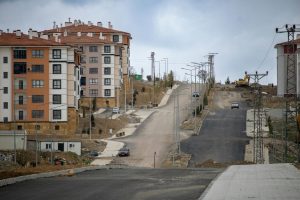The 15-Minute City: When Everything You Need is Nearby
Have you ever found yourself feeling drained and stressed out after a long commute to work? Or frustrated by having to run multiple errands in different parts of town? If so, then the concept of the 15-minute city might just be the answer to your problems. This urban planning idea is gaining traction in cities all over the world, with the ultimate goal of creating a more livable, sustainable, and convenient way of life. In this article, we’ll explore what the 15-minute city is all about and how it can make everything you need just a stone’s throw away.
The 15-Minute City: What is it?
The 15-minute city is a concept that revolves around the idea of having all the necessities of daily living within a 15-minute radius from home. This means having access to essential services, such as grocery stores, schools, medical facilities, and leisure activities, all located within a short distance from your residence. The idea is to reduce the need for long commutes and to promote a more self-sufficient and sustainable way of living.
The Benefits of Living in a 15-Minute City
Convenience and Time-Saving
One of the greatest advantages of the 15-minute city is the convenience it offers. With everything you need close by, you can save time and energy that would have been spent on commuting or running errands in different parts of town. This means more time for leisure activities, family, and friends.
Better Health and Well-Being
Living in a 15-minute city can also have a positive impact on your health and well-being. With shorter commutes, you can reduce stress levels and increase physical activity by walking or biking to nearby destinations instead of driving. This can also contribute to cleaner air and a greener environment.
Cost Savings
The 15-minute city can also save you money in the long run. With less need for transportation, you can cut back on expenses related to owning a car, such as gas, insurance, and maintenance. Additionally, having essential services nearby can reduce the need for ordering delivery or eating out, saving you even more money.
Examples of 15-Minute Cities
The 15-minute city concept is not a new idea and has been implemented in various forms in different cities around the world. For example, Copenhagen, Denmark, is often considered a prime example of a 15-minute city, with its extensive network of bicycle lanes, efficient public transportation, and mixed-use development, making it easy for residents to access everything they need within a 15-minute radius.
Another excellent example is Melbourne, Australia, where the local government has adopted the “20-minute neighborhood” model, which promotes similar principles as the 15-minute city. This approach aims to create neighborhoods with a variety of essential amenities, within a 20-minute walk or bike ride from homes.
The Challenges of Implementing the 15-Minute City
While the idea of the 15-minute city is attractive, its implementation can face various challenges, depending on the city’s size, infrastructure, and population density. For instance, cities with low density and a lack of public transportation may struggle to provide essential services within a 15-minute radius. Additionally, the cost of living in areas with convenient amenities can be higher, making it less accessible to low-income residents.
The Future of Urban Living
The 15-minute city concept is gaining popularity, especially in the wake of the COVID-19 pandemic, which has highlighted the importance of access to essential services in close proximity. Many cities are now considering adopting this approach in their urban planning, with hopes of creating more livable, sustainable, and resilient communities for their residents.
Final Thoughts
In a world where our lives are becoming increasingly busy and fast-paced, the 15-minute city concept offers a hopeful solution for a more balanced and efficient way of living. With access to all essential services nearby, we can save time, money, and promote better health and well-being. While its implementation may face challenges, it’s essential to consider the potential benefits and continue working towards making the 15-minute city a reality in cities worldwide.










